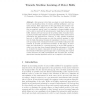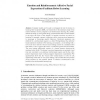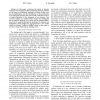271 search results - page 21 / 55 » Bio-inspired Model of Robot Adaptive Learning and Mapping |
AMS
2007
Springer
14 years 2 months ago
2007
Springer
Autonomous robots that can adapt to novel situations has been a long standing vision of robotics, artificial intelligence, and cognitive sciences. Early approaches to this goal du...
AIHC
2007
Springer
14 years 2 months ago
2007
Springer
Computer models can be used to investigate the role of emotion in learning. Here we present EARL, our framework for the systematic study of the relation between emotion, adaptation...
NEUROSCIENCE
2001
Springer
14 years 13 days ago
2001
Springer
This volume is intended to help advance the field of artificial neural networks along the lines of complexity present in animal brains. In particular, we are interested in examin...
ICRA
1999
IEEE
14 years 9 days ago
1999
IEEE
We consider the robot exploration of a planar graphlike world. The robot's goal is to build a complete map of its environment. The environment is modeled as an arbitrary undi...
CEC
2009
IEEE
14 years 2 months ago
2009
IEEE
—In this paper we discuss the notion of situated evolution. Our treatment includes positioning situated evolution on the map of evolutionary processes in terms of time- and space...



